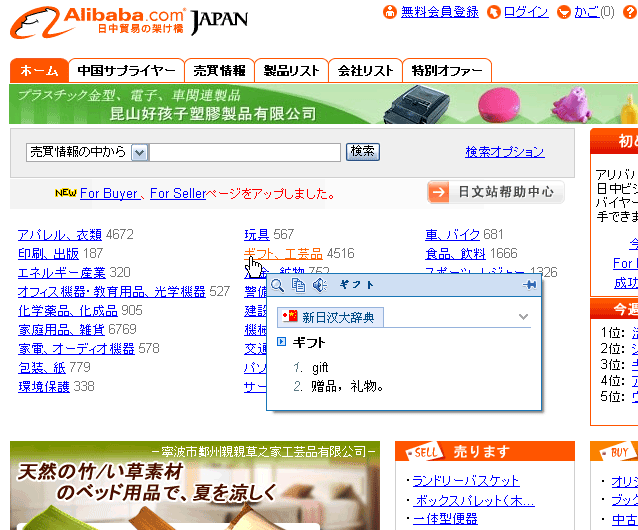作者kevin发布:
Lingoes 灵格斯词霸是一款简明易用的翻译与词典软件,支持全球超过60多个国家语言的互查互译、支持多语种屏幕取词、索引提示和语音朗读功能,不仅拥有当前主流商业词典软件的全部功能,而且提供海量词库免费下载使用,是学习外语的最佳工具.
2006-09-26 新增 "EDRDG 日英词典"
该词典由 Electronic Dictionary Research and Development Group 开发, 词汇量 115398, 简明实用, 由网友 Seabook Arno 上传, Lingoes 5 星推荐.
Lingoes 灵格斯词霸是一款简明易用的翻译与词典软件,支持全球超过60多个国家语言的互查互译、支持多语种屏幕取词、索引提示和语音朗读功能,不仅拥有当前主流商业词典软件的全部功能,而且提供海量词库免费下载使用,是学习外语的最佳工具.
2006-09-26 新增 "EDRDG 日英词典"
该词典由 Electronic Dictionary Research and Development Group 开发, 词汇量 115398, 简明实用, 由网友 Seabook Arno 上传, Lingoes 5 星推荐.
 下载:灵格斯词霸9月25日更新 - 英日词典
下载:灵格斯词霸9月25日更新 - 英日词典
EDRDG 日英词典基于 Electronic Dictionary Research and Development Group 创建的日英词典工程, 是一部非常实用的词典, 由网友 Seabook Arno 转换成Lingoes格式并分享给大家使用. 关于该工程的历史介绍如下:
原始版本在: http://www.csse.monash.edu.au/~jwb/edict_doc.html
PROJECT HISTORY
The project was begun in 1991 by the current editor (Jim Breen) when an early DOS-based Japanese word-processor (MOKE - Mark's Own Kanji Editor) was released, containing an initial small version of the EDICT file. This was progressively expanded and edited over the following years. In 1999 the EDICT, which by this time contained about 60,000 entries, was converted into an expanded format and the first XML-format JMdict file released. The EDICT2 format was created in 2003, primarily for use with the WWWJDIC dictionary server.
The growth in entries in the file is largely due to the efforts of Jim and the many people who contributed entries to it over the years. The increase in entry numbers has slowed as the file has achieved coverage of a large proportion of the Japanese lexicon. Much of the editorial work in recent years has concentrated on amendments and expansion to existing entries.
A more expanded explanation of the early developments in the EDICT file can be found in the original documentation.

